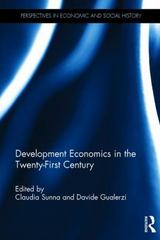Question
3. A decision at the margin Hilary is a hard-working college sophomore. One Tuesday, she decides to work nonstop until she has answered 88 practice
3. A decision at the margin
Hilary is a hard-working college sophomore. One Tuesday, she decides to work nonstop until she has answered 88 practice problems for her economics course. She starts work at 8:00 AM and uses a table to keep track of her progress throughout the day. She notices that as she gets tired, it takes her longer to solve each problem.
| Time | Total Problems Answered |
|---|---|
| 8:00 AM | 0 |
| 9:00 AM | 40 |
| 10:00 AM | 64 |
| 11:00 AM | 80 |
| Noon | 88 |
Use the table to answer the following questions.
The marginal, or additional, gain from Hilary's first hour of work, from 8:00 AM to 9:00 AM, is
problems.
The marginal gain from Hilary's third hour of work, from 10:00 AM to 11:00 AM, is
problems.
Later, the teaching assistant for Hilary's economics course gives her some advice. "Based on past experience," the teaching assistant says, "working on 20 problems raises a student's exam score by about the same amount as reading the textbook for 1 hour." For simplicity, assume students always cover the same number of pages during each hour they spend reading.
Given this information, in order to use her 4 hours of study time to get the best exam score possible, how many hours should she spend working on problems and how many should she spend reading?
0 hours working on problems, 4 hours reading
1 hour working on problems, 3 hours reading
2 hours working on problems, 2 hours reading
3 hours working on problems, 1 hour reading
4 hours working on problems, 0 hours reading
Step by Step Solution
There are 3 Steps involved in it
Step: 1

Get Instant Access to Expert-Tailored Solutions
See step-by-step solutions with expert insights and AI powered tools for academic success
Step: 2

Step: 3

Ace Your Homework with AI
Get the answers you need in no time with our AI-driven, step-by-step assistance
Get Started


